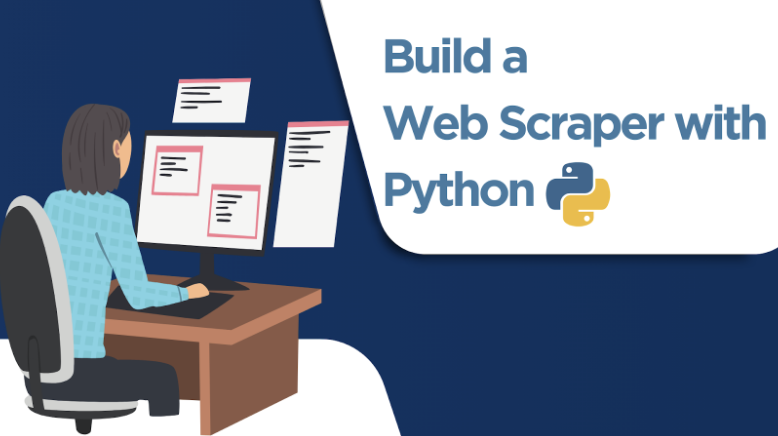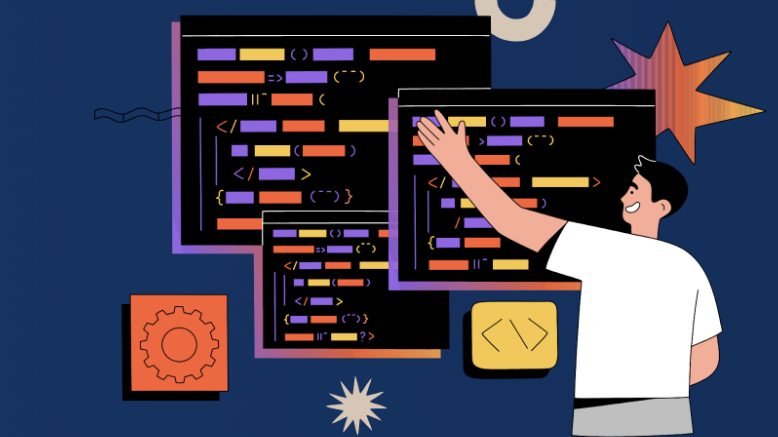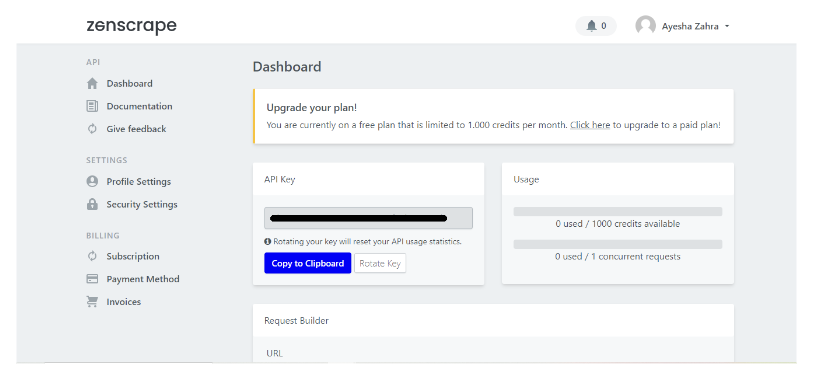
The success of multiple businesses depends a lot on web scraping. But, it can also be challenging for companies to find the best web scraper. Therefore, we brought this blog for your guidance. Developers use webscraper with Python in different ways to scrape data. For example, we use libraries like Beautiful Soup. If you are a beginner reading this blog, you will explore the reasons behind using Python for web scraping. Let us show you the flow of this blog.
First, we will talk about the choice of Python for web scraping. Then, we will tell you what is Beautiful Soup. Furthermore, we will build a web scraper using Beautiful Soup. But there are some challenges in web scraping with Beautiful Soup. Therefore, we will explore the Zenscrape for web scraping. We will also show you how easy it is to integrate Zenscrape.
Why Do We Use Python in Web Scraping?
Python automates web scraping. Therefore, we get a large amount of data from websites within no time. We can also store a large amount of data in a structured format.
Besides, Python is simple and understandable, even for new web scrapers. We spend very little time writing code for Python web scraping.
❌Manual web scraping can consume much time when searching for data.
So, Python is used because it is:
✔️Simple
✔️Versatile
✔️Time-Saving
✔️Automated
How Do You Build a Simple Web Scraper?
1) Install Beautiful Soup and an HTML parser called `lxml`.
pip install beautifulsoup4 pip install lxml
2) Bring Beautiful Soup and the `requests` library in your Python script.
from bs4 import BeautifulSoup import requests
3) Fetch the webpage’s HTML using the `requests` library.
url = 'https://en.wikipedia.org/wiki/Web_scraping' response = requests.get(url)
4) Use Beautiful Soup to make sense of the HTML.
soup = BeautifulSoup(response.text, 'html.parser')
5) Use Beautiful Soup’s tools to find and grab specific parts of the HTML.
title = soup.title.text
paragraphs = soup.find_all('p')
6) Grab the text or details you want from the found elements.
print(f'Title: {title}')
for paragraph in paragraphs:
print(paragraph.text)
7) Check if the webpage is accessible and handle errors.
if response.status_code == 200:
# Continue scraping
else:
print(f'Error: {response.status_code}')
Important Practices When Using Beautiful Soup
👉If a site uses fancy JavaScript, you might need Selenium.
👉Follow the website’s rules in `robots.txt` to avoid trouble.
👉Don’t scrape too fast; be kind to the website’s server.
👉Regularly test your script and fix any issues. Print results while testing.
👉Decide where to keep the data, like in a file or database.
👉Be a good web citizen. Follow the rules, scrape gently, and be aware of the website’s feelings.
What is Zenscrape?
Zenscrape helps us extract information from lots of websites. It’s not just suitable for a few sites. But it works great even when dealing with hundreds or thousands monthly. Here are the features of Zenscrape:
- Zenscrape works with high speed and gets the right info.
- It’s simple to use, and you can even set it up to extract the JSON data automatically.
- Zenscrape uses different IP addresses for each request, so you don’t get blocked. It has a vast pool of over 30 million IPs worldwide.
- Zenscrape offers different proxy servers that help you get data without any problems. They have Standard proxies (cheaper and faster) and Premium proxies (residential IPs) for complex situations.
Pros
- Free plan available
- Grabs data quickly and accurately
- Easy to use
- Lots of IP addresses to avoid getting blocked
- You can schedule it to work automatically
- No slow-downs, even with heavy use
Cons
- Need another tool to change the data format sometimes.
Limitations of Traditional Web Scraping Methods
Here are some limitations of traditional web scraping methods:
❌Struggles with modern, dynamic websites using JavaScript.
❌Faces challenges with anti-scraping measures like CAPTCHAs and IP blocking.
❌Things become complicated when websites change their structure or design.
❌This may raise legal concerns as it collects data without explicit permission.
❌Slows down and becomes resource-intensive when dealing with a large amount of data or many websites.
Benefits of Using Zenscrape API for Web Scraping
✔️Handles dynamic content with JavaScript rendering for accurate data extraction.
✔️Uses IP rotation and CAPTCHA solving to overcome blocking and security measures.
👉Zenscrape boasts a vast pool of over 30 million IP addresses globally.
✔️Adapts to website structural changes, reducing the need for manual adjustments.
✔️Emphasizes ethical scraping practices and encourages adherence to website terms of service.
✔️Zenscrape is designed for scalability. Therefore, it offers fast performance even with extensive data or multiple websites.
How Do You Integrate Zenscrape With Python?
With all the above benefits, we realize that choosing Zenscrape can be our best decision. But how do you integrate Zenscrape using Python? Let’s explore.
- Visit the Zenscrape website at https://zenscrape.com/
- Click on the Register button at the top right corner.
- Fill out the registration form and click on Sign Up.
- Sign in to your Zenscrape account by clicking on the Login button.
- Navigate to the dashboard and get the API key.
After getting the API key, let’s write the Python code. You can also get the sample code from Zenscrape website as under:
import requests
headers = {
"apikey": "ADDYOURAPIKEYHERE"}
params = (
("url","https://httpbin.org/ip"),
("premium","true"),
("country","de"),
("render","true"),
);
response = requests.get('https://app.zenscrape.com/api/v1/get', headers=headers, params=params);
print(response.text)
Replace the placeholder with the actual API key. Add the desired URL in place of https://httpbin.org/ip. Finally, run the code to get the result for your targeted URL. Use the below code to scrape data with proxy:
import requests
proxy = {
"http": "http://YOUR-APIKEY:render=true&[email protected]:8282",
"https": "http://YOUR-APIKEY:render=true&[email protected]:8282"
}
response = requests.get('https://quotes.toscrape.com/js', proxies=proxy, verify=False);
print(response.text)
What Are the Real-World Applications of Web Scraping?
Web scraping helps businesses in different areas. For online shops, it helps monitor competitors’ prices and check customer reviews. Finance experts use it to extract data for smart investing. Health researchers use scraping to gather and study medical info for better treatments.
Zenscrape is a big help in all this. It powers web scraping. It handles tricky data scraping on websites. Zenscrape is the best choice because it deals with problems like JavaScript website features and anti-scraping measures.
Conclusion
It is important to get data from different competitors’ websites for business success. However, choosing the right tool for this task can also be challenging. Therefore, we use web scraping to help us get the right data. Web scraping also comes with manual and automated methods. Manual methods might take time. Therefore, we use Zenscrape for efficient web scraping.
FAQs
What Is a Web Scraper in Python?
A web scraper in Python helps us extract information or data from different websites. We use this data in many applications such as decision making.
Is Python Good for Web Scraping?
Yes. Python is a versatile language with ease of implementation. Therefore, we can use it for web scraping.
What Is the Best Python Web Scraper?
Zenscrape is the best Python web scraper with the availability of proxies to prevent getting blocked.
What Is Web Scraping Used For?
Businesses use web scraping to make efficient decisions when dealing with their operations.
What Makes Zenscrape a Preferable Choice for Web Scraping?
Zenscrape, unlike manual web scraping, prevents blocking IP addresses using a proxy pool. This makes it a preferable choice for web scraping.
Can Zenscrape Be Integrated Into Existing Python Projects?
Yes. You can integrate Zenscrape into existing Python projects using the Zenscrape API key.
What Are Some Common Challenges in Web Scraping, and How Does Zenscrape Solve Them?
Traditional scraping struggles with dynamic websites, anti-scraping measures, and design changes. Legal concerns arise from unauthorized data collection. Efficiency drops with large datasets or multiple sites.
Zenscrape efficiently processes dynamic content through JavaScript rendering. Moreover, it also employs IP rotation and CAPTCHA solving for security.
Zenscrape also maintains a vast global pool of 30 million IP addresses. Moreover, it also adapts to website structural changes. The interesting part is that Zenscrape prioritizes ethical scraping practices. As a result, it ensures scalability for fast performance with extensive data or multiple websites.
Sign Up for free at Zenscrape – Get accurate data for your websites.







